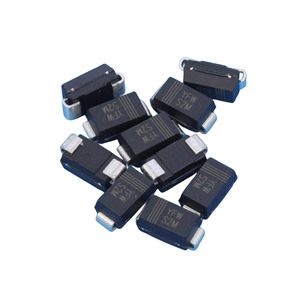Date:2024-10-09 Categories:Product knowledge Hits:309 From:Guangdong Youfeng Microelectronics Co., Ltd
Basic performance parameters and requirements of fast recovery diodes
What are the basic performance parameters and requirements of fast recovery diodes in application?
Generally, fast recovery diodes mainly refer to FWD devices that are matched with fast thyristors, high-frequency thyristors, GT0, IGCT, lEGT and other thyristor derived devices during operation. This type of fast recovery diode typically has a high current, high voltage, and reverse recovery time of generally over 1 microsecond. It mostly uses diffusion type through structures and electron irradiation processes, with currents ranging from tens of amperes to thousands of amperes and voltages ranging from hundreds of volts to 3000 volts. The reverse recovery feature is usually quite robust. Most of them are wafer structures. The level of general FRD in our country is not much different from the advanced level abroad. Domestic components account for more than 80% of the domestic market share, and there are also many exports.
However, there is another type of fast recovery diode that is used in conjunction with IGBT and power MOSFET during operation. This type of FRD used in conjunction with high-frequency power devices not only needs to be fast in performance, but also requires "soft" characteristics to avoid high voltage spikes, RF interference, and electromagnetic interference. Usually, foreign companies that manufacture IGBT and M0SFET also produce fast recovery diodes that match them. There is currently no commercial mass production of IGBT and fast recovery diode in China. Due to the relatively low-end nature of fast recovery diodes compared to IGBTs, with the increasing attention and investment in core power electronic devices by the government, fast recovery diodes have been officially approved and have excellent development prospects.
1、 Minority carrier lifetime control technology for fast recovery diodes
For a certain number of charge carriers, the lower their lifetime, the faster they disappear, and the shorter the reverse recovery time in FRD. Therefore, the most direct and effective way to improve recovery speed is to try to minimize the minority carrier lifetime in the base region as much as possible. The method is to introduce deep level recombination centers, such as metals, impurities, or defects, which can generate deep level recombination centers. Gold expansion, platinum expansion, radiation irradiation, rapid cooling and heating can all reduce the lifetime of the step. When controlling the lifespan, there will also be negative effects such as increased forward resistance and leakage current of the belt. The changes in on state resistance and leakage current caused by different life control methods vary greatly. Therefore, introducing defects or impurities casually cannot be used for lifespan control, but requires a lot of research and practical summary. Recently, commonly used lifespan control technologies include gold expansion, platinum expansion, electronic or chloride ion vehicle photography, etc.
2、 Basic performance parameters and requirements of fast recovery diodes
IFM is the forward peak current of the diode, - dif/dt is the forward signal current drop rate, IRM is the reverse peak current, VFM is the forward voltage drop of the diode, VR is the reverse voltage, VRM is the reverse peak voltage, tm is the storage time, tb is the composite time, the reverse recovery softness factor S=tb/tm, trr is the reverse recovery time and trr=tm+tb, Qrr is the reverse recovery charge, and dir (REC/dt) is the reverse recovery current drop rate.
The basic performance requirements of FRD are:
(1) The recovery speed is fast, which means the reverse recovery time trr should be small.
(2) The forward voltage drop is small, which requires a small VF to reduce power consumption in the conducting state.
(3) The reverse leakage current Ir is small to reduce power consumption in the off state.
(4) The reverse peak current is small to reduce the impact of diode reverse current on other switching devices in the control power circuit;
(5) The softness S of reverse recovery is large, reducing the instantaneous induced voltage overshoot and avoiding oscillation.
(6) Fast recovery diodes must also have good temperature stability to reduce or avoid performance degradation when the device temperature rises. A power diode with a positive temperature coefficient for forward voltage drop has good temperature stability.

Previous: Classification, Structure, and Principle of MOSFET
Next: Using voltage inspection method to quickly locate fault points in integrated circuits